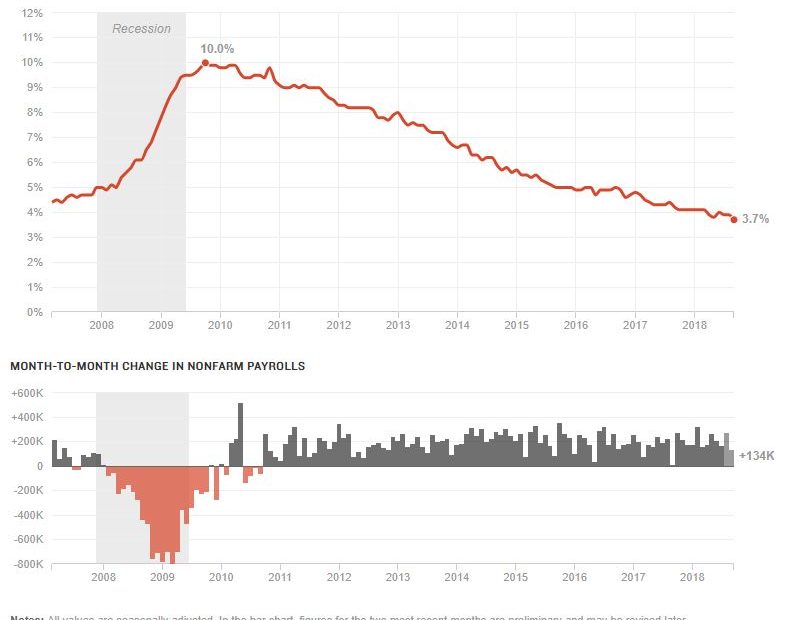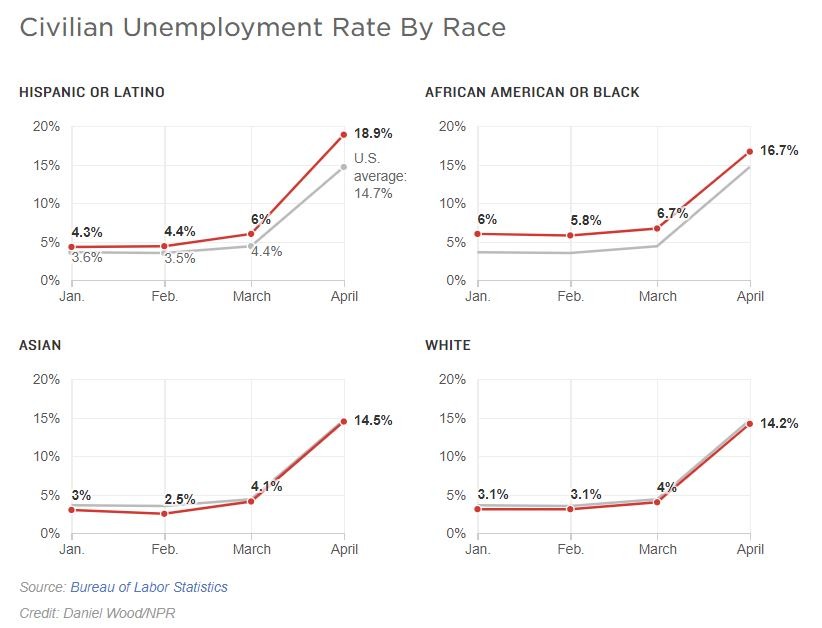
For The History Books: 14.7% Unemployment, 20.5 Million Jobs Wiped Away, At Least Temporarily
BY SCOTT HORSLEY
The Labor Department delivered a historically bad employment report Friday, showing 20.5 million jobs lost last month as the nation locked down against the coronavirus. The jobless rate soared to 14.7% — the highest level since the Great Depression.
The highest monthly job loss before this was 2 million in 1945, as the nation began to demobilize after World War II. The worst monthly job loss during the Great Recession was 800,000 in March 2009.
Don’t see the graphic above? Click here.
Unemployment was 4.4% in March as the coronavirus began to take hold in the U.S. It approached 25% during the Great Depression and remained elevated until World War II.
Don’t see the graphic above? Click here.
The carnage was felt across industries in April. With most travel shut down, leisure and hospitality jobs fell by 7.6 million. The retail and health care sectors each dropped by 2.1 million. Manufacturing lost 1.3 million and government jobs fell by 980,000.

Don’t see the graphic above? Click here.
As painful as the April report is, it doesn’t tell the full story of the economic wreckage left by the coronavirus and the government’s drastic efforts to control it.
The report is based on surveys conducted in the middle of April, and claims for jobless benefits suggest that millions of additional jobs have been lost since then. What’s more, the headline unemployment figure includes only people who are actively looking for work and those on temporary furlough, ignoring millions more who have been involuntarily idled by the pandemic. A broader government measure that includes people who’ve given up looking for work and those who are working less than they would like climbed to 22.8%.
Even with those limitations, the April snapshot is staggering — a freeze-frame image of an economy that was abruptly and deliberately stopped in its tracks in a desperate bid to slow the spread of a deadly virus.
“The whole world is kind of at a standstill now, so we’re feeling the effects of that,” said Carmine DiBiase, a longshoreman in Florida whose work loading cruise ships was suspended weeks ago.
“All the plans for this year went out the window,” said David Edwards, who expected to spend the summer guiding people around a zoo in Coal Valley, Ill., that’s now shuttered, and working as a mascot for a minor league baseball team whose games have been suspended.
“The two seasonal jobs that I had are both shut down for now,” he said. “I feel very scared about my future.”
Even as businesses in some parts of the country cautiously begin to reopen, White House economic adviser Kevin Hassett warns that the downturn has not hit bottom.
“The next jobs report is going to look worse than this one,” he said, predicting the official unemployment rate will climb to around 20%. “I think we’re definitely going to be looking at one more month of catastrophically and tragically bad data.”
A somewhat positive feature in the jobs report is that most of the newly unemployed described their status as temporary.
“Almost everyone who’s unemployed expects to be reemployed in the next six months,” Hassett noted. “That suggests that Americans are doing what Americans do, which is taking a tough hit but remaining optimistic and hopeful.”















